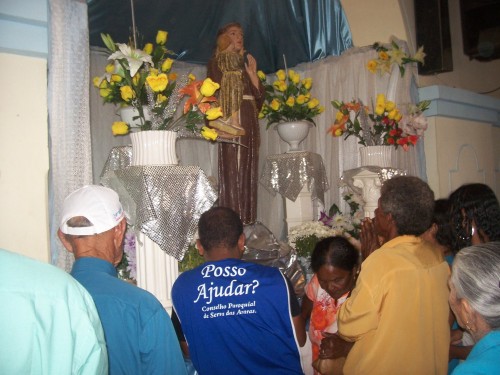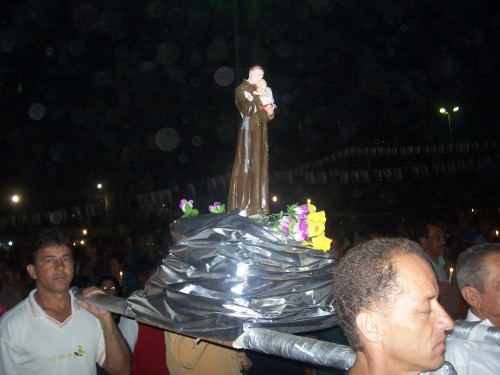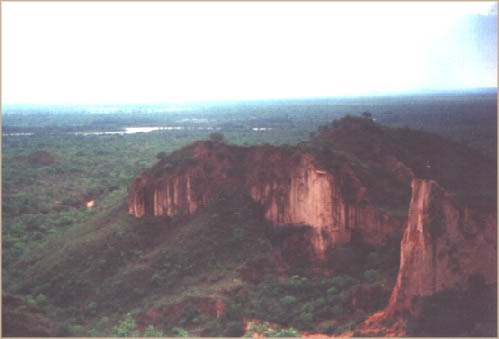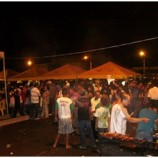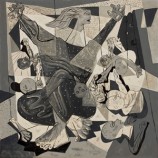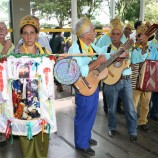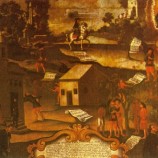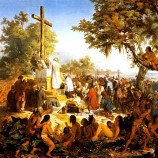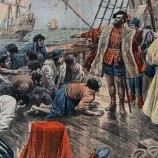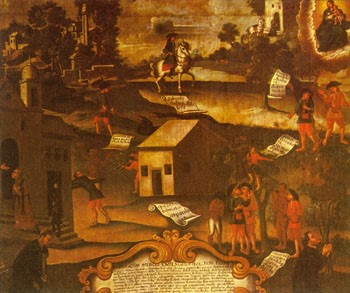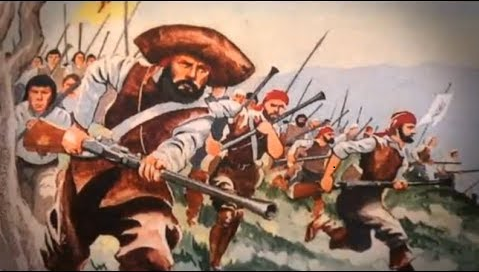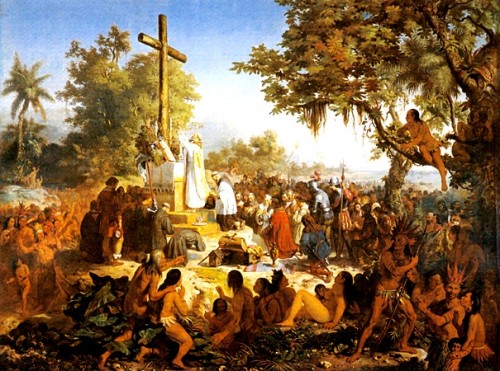I – Serra das Araras, a Story of Devotion and Triumph
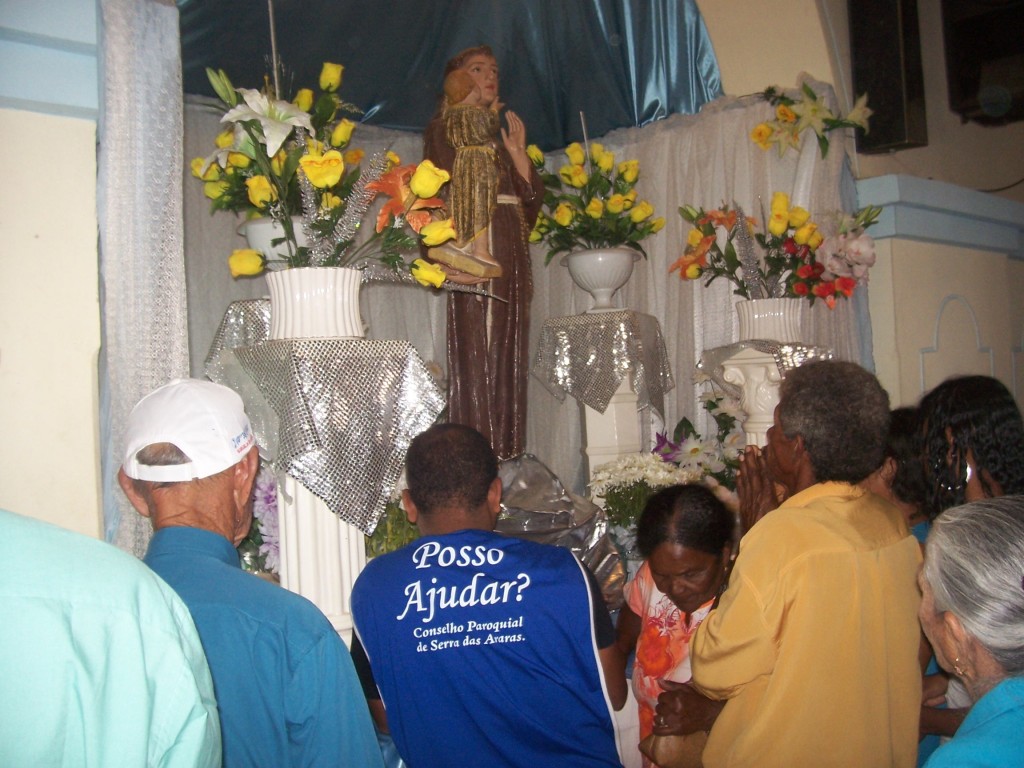
Under the series Religious Pilgrimages in the Backlands
Situated deep in the northern backlands of Minas Gerais state, the Community of Serra (Sierra) das Araras, today within the district of the Chapada Gaúcha county, every year in the first half of June is the scene of various expressions of the faith of God’s people. Thousands of pilgrims and Payers of Promises make the pilgrimage here on foot, horseback, in private or rental cars, by bus and motorcycle. They thank God for the graces received through the intercession of Santo Antônio da Serra das Araras, the region’s popular revered saint for centuries now.
The small town is a must for thousands of devout pilgrims of the Saint, mainly from the North and Northwest of Minas Gerais State, but also from other regions of Brazil who dream of and hopefully prepare themselves for the big party. They are called The Pilgrims of Santo Antônio who transform the village’s everyday routine during the days of the event and stimulate the local economy.
According to some reports, the community of Serra das Araras was founded between one hundred and a hundred and fifty years ago, due to the appearance of an image of Santo Antonio at the height of Serra das Araras. The figure was taken to the village where a straw chapel was erected in its name. But the figure did not stay there. It reappeared in the mountains where it had originally been found. After a series of disappearances and reappearances at its place of origin, it came to be regarded as enchanted or divine because it walked, or be it, it always came back to its place of origin. The news spread throughout the backcountry and successive waves began in visitation to the image. Over time the pilgrimages became more regular to this place and a town developed, today the district of Serra das Araras.
It is uncertain when the first pilgrimages began. According to folklore and to some historians, for over one hundred years now the people of this region give thanks to the intersession of the Saint of the Poor, Saint of the striven people of the Grande Sertão, Backlands, an expression immortalized by the literary work of Guimarães Rosa, where hopes are strengthened by the faith in God.
The pilgrims of Brazil and of Latin America have always kept a strong connection with faith or the mystical, the arduous life of the people, the fight to defend one’s life that traverses the dispute and conquest over land, marked by the oppression of big farmers and landowner colonels and by the extreme poverty of the people. It was in the original village of Brejo da Passagem, the original name of Serra das Araras, which at the turn of the 20th Century the vigilante Antônio Dó, fugitive of the police, established himself and for many years reigned as a sort of head honcho, lord of the land. His deeds are remembered five different times in Guimarães Rosa’s Grande Sertão Veredas, or The Devil To Pay in the Backlands, the english title.
It’s worth adding that in the district of Serra das Araras there exists various reminiscent communities of quilombos, small villages founded by runaway slaves, the foremost being “Vão dos Buracos”, roughly meaning “Valley of the holes”. It is located in a paradisiacal setting in the interior of a canyon 300 meters downstream from where the Pardo River is spawned, left bank tributary of the São Francisco River. It is in these canyons that the araras carve out holes for nests, more than one hundred meter distance from the ground and top levels, the phenomena of which the place is named after. The muddy and slippery type of soil makes it impossible to build access roads, even for horses, into to the interior of the canyon which became worthy of a notable citation by Guimarães Rosa in The Devil To Pay in the Backlands: “The Valley of the Holes is a place where even the most fearless of gunmen do not dare to peruse their enemies”. The Valley was the refuge for weary bandits seeking to recover their strength. It was also in one of the neighboring city of São Francisco where on the 16th of December 1984, Elói Ferreira was murdered for his fight to defend this very land.
With the founding of Chapada Gaúcha county, dismembered of São Francisco, the party began to receive greater encouragement from the government. The organization is taken up by the representatives of City Hall, Parish Council and the local community. In 2009, The Festival and Pilgrimage of Santo Antônio de Serra da Araras received title as County Cultural Heritage and with the approval of COMPAC – Municipal Council of the Cultural Heritage of Chapada Gaúcha and by the House of Representatives through specific legal engagement. Very recently, the Santo Antonio Church of Serra das Araras, as determined by Diocese of Januária, was recognized as a shrine and became the first “Antonian” sanctuary that is dedicated to St. Antonio by the Catholic Church in Northern Minas Gerais.
The centennial pilgrimage of Serra das Araras represents an important source of income for the local residents, principally with the sale of arts and crafts and accommodation services for rooms, ranches and private homes. We also note the intensification of the marketplace on the town’s streets and avenues taken to by street vendors arriving from a wide range of places to offer their products.
Each year the festival receives new attractions such as the arrival of groups of motorcycle bikers, horseback riders, public shows with local and regional artists. Overall it’s a truly unique party! The daily life of the quiet hinterland village gives way to the big city bustle. People of all different ethnicities, races and beliefs interact in an atmosphere of faith and devotion, making the traditional party of Serra das Araras one of the biggest religious festivals in the interior of Minas Gerais. Perhaps, through the historical facts we can find explanations for such outstanding faith and devotion of a people marked along the ages by extreme poverty, social conflict, suffering, but also by persistence and triumph.
Related Articles


